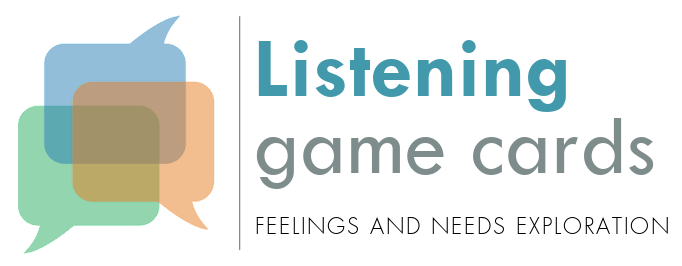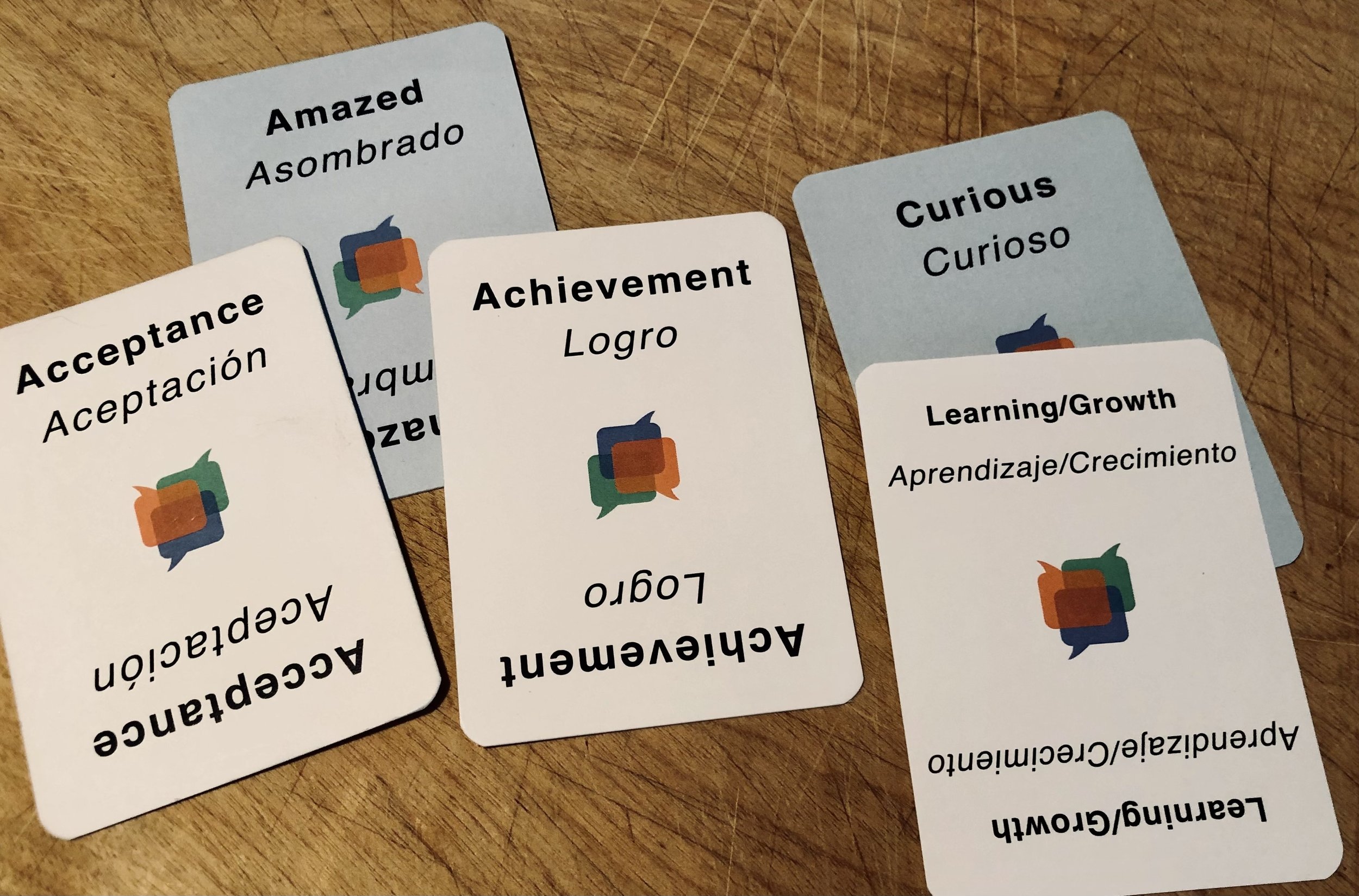Listening Game Cards
Listening Game Cards are a powerful set of 225 cards split into two bilingual decks: 113 Feelings cards and 112 Needs cards. Combined, they are a powerful tool supporting self-awareness, personal growth, and improved communication and connection with others through emotional intelligence.
Listening Game Cards are a powerful set of 225 cards split into two bilingual decks: 113 Feelings cards and 112 Needs cards. Combined, they are a powerful tool supporting self-awareness, personal growth, and improved communication and connection with others through emotional intelligence.
Listening Game Cards are a powerful set of 225 cards split into two bilingual decks: 113 Feelings cards and 112 Needs cards. Combined, they are a powerful tool supporting self-awareness, personal growth, and improved communication and connection with others through emotional intelligence.
Listening Game Cards are based on the Nonviolent Communication (NVC) principles created by Marshall Rosenberg in the 1960s. They are a way of working with an expanded language of feelings and needs through storytelling. It’s important to know that using Listening Game Cards is not NVC practice. Learn about the history of Listening Game Cards here.
Listening Game Cards can be used in many ways and have many applications:
Collaboration exercise
Couples’ communication
Cultivating inclusive cultures
Difficult conversations
Icebreaker exercise
Mindfulness exercise
Negotiation
‘Other’ awareness
Peer support
Problem-solving
Relationship building and repair
Self-awareness and reflection
Story sharing
Strategic HR placement
Team building
Wellness exercise
Workflow planning
Working with a Therapist
Workplace conflict management
Fun Facts about using Listening Game Cards:
The classic in-person game, V1 Feelings and Needs Exploration, is played like the classic games of Pictionary or Charades. In this game, players take turns sharing a story for others to listen to with curiosity for understanding the Storyteller’s feelings. Listeners are learning to listen while setting aside their judgment or evaluation. Once the Storyteller has finished their story, they name the feelings that came up for them when telling the story, and place the feelings cards on the table for Listeners to see. Listeners then look through their Needs cards to thoughtfully identify needs that might be connected to the Storyteller’s feelings cards. Listeners are not offering advice, insight, or observations. They offer their needs guesses until the Storyteller says they’ve had enough,or there are no more guesses. The Storyteller then selects the top 2 to 4 needs that resonated most for them. The Storyteller now has tools for setting goals and working on strategies to meet those needs. Detailed instructions, including how this version works online using lists instead of cards can be found in V1 Feelings and Needs Exploration.
In the workplace, Listening Game Cards can be used to invite conversation, for self-care and reflection after an awkward or difficult encounter, and to prepare for difficult conversations. They can also be used for peer support, team-buidling, an dproblem solving exercises.
Because feelings tell us about our needs, identifying the needs connected to any given feeling or group of feelings helps us reach clarity on what is going on for us in any given situation.
FMRI studies show that properly naming feelings helps us to calm. With 113 Feelings and 112 Needs cards, it’s highly likely that you’ll find one or more words to name your feelings properly. Identifying, naming, and connecting the needs underlying those feelings is where the awareness magic happens! People are often surprised at how powerful the experience of naming and connecting needs to feelings is.



